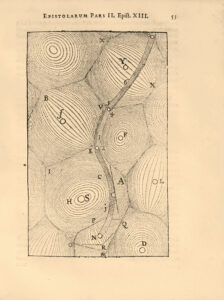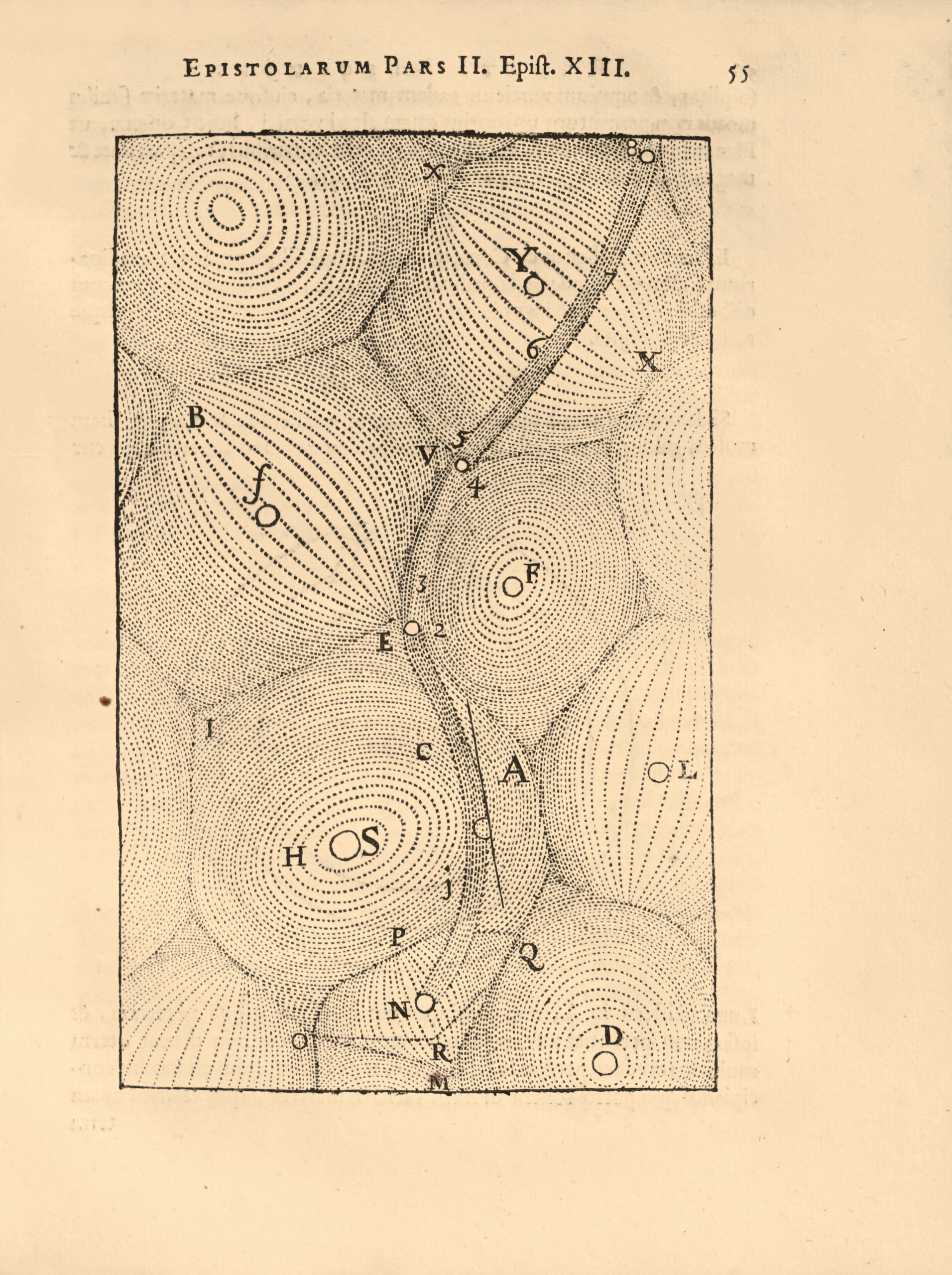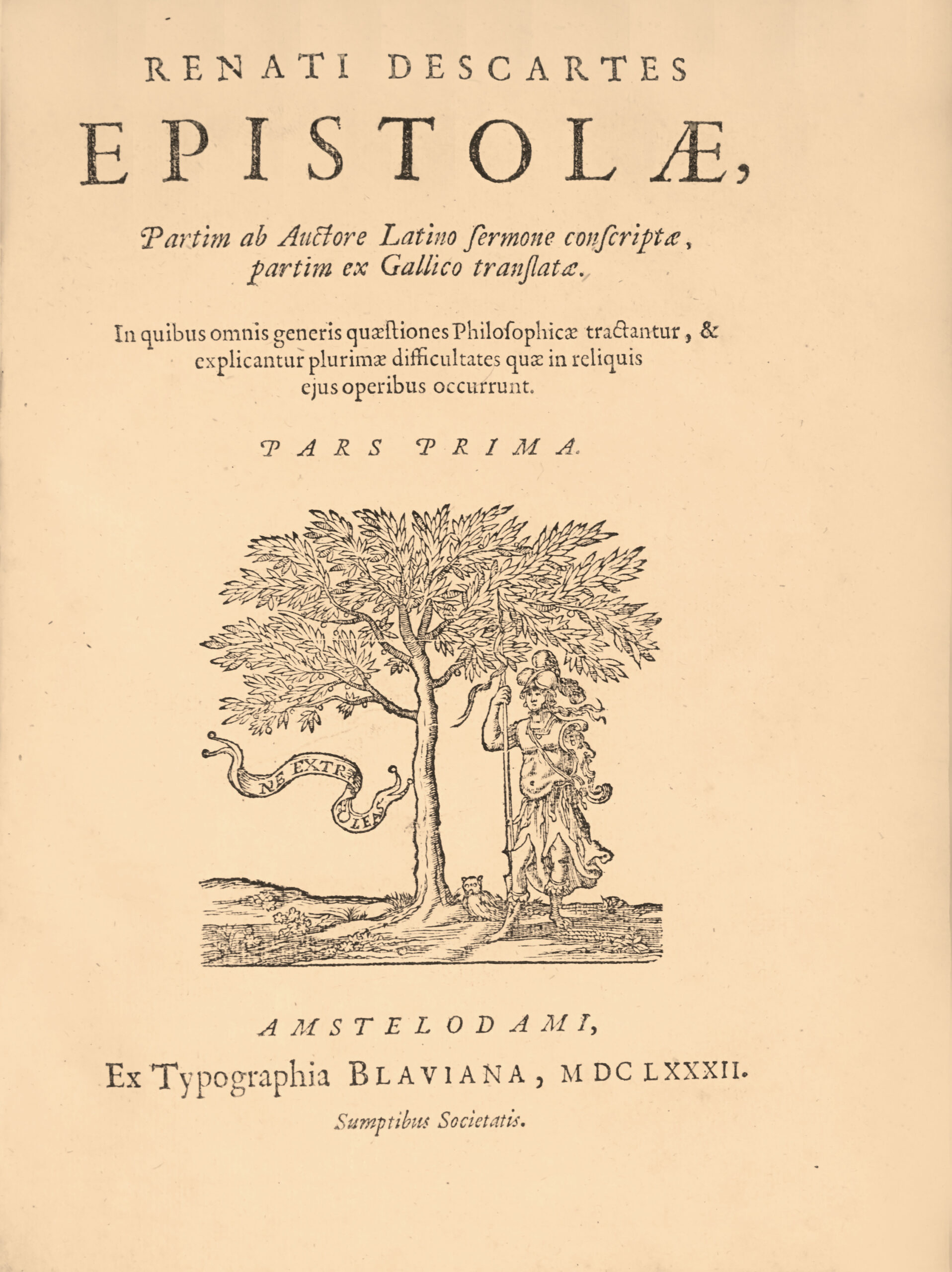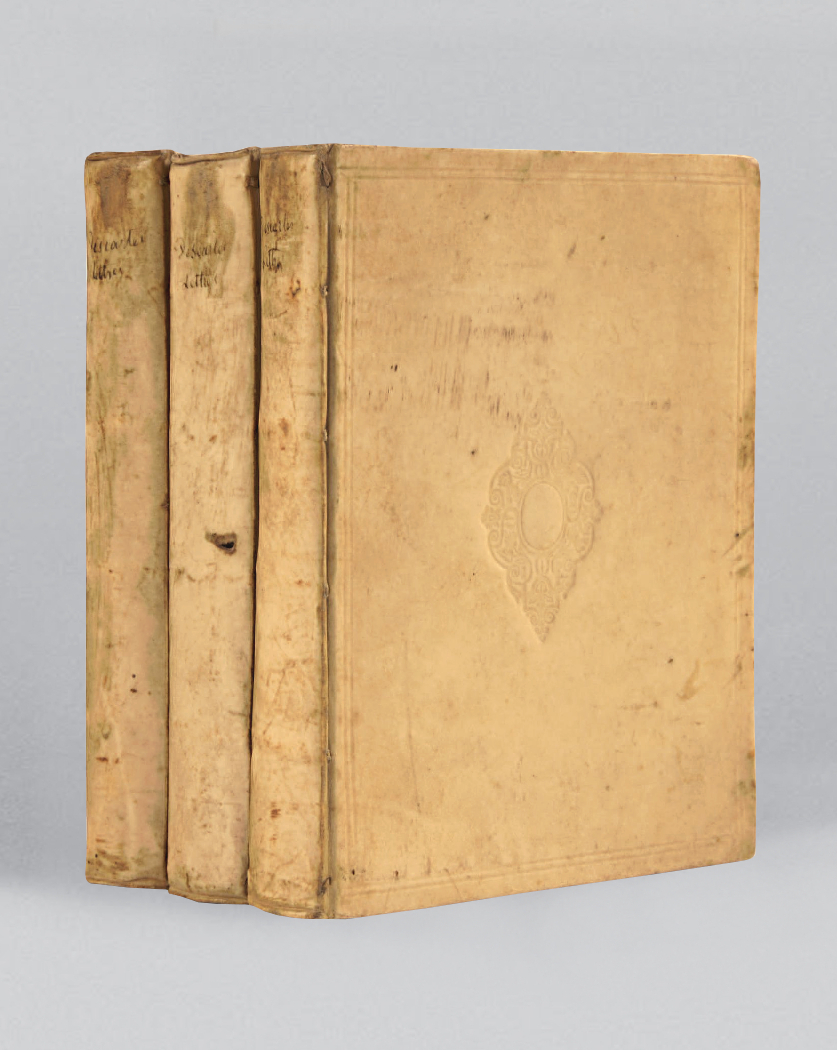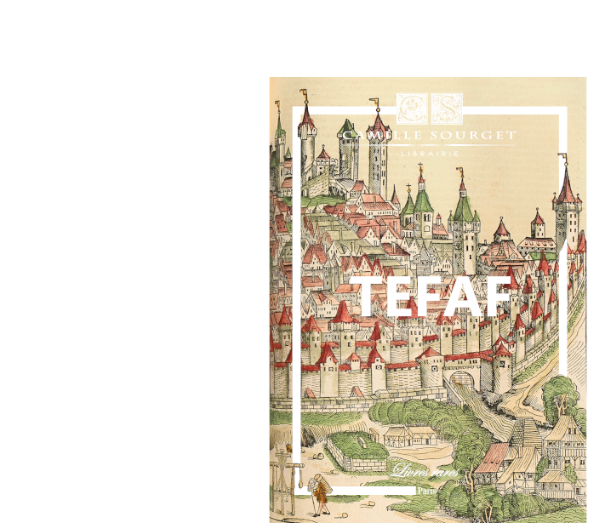Amsterdam, Blaeu, 1682-1683.
3 parts in 3 volumes 4to, I/ (1) bl.l., (4) ll, 383 pp, (1) bl.l.; II/ (1) bl.l., (2) ll, 404 pp., (2) ll., (1) bl.l.; III/ (1) bl.l., (8) ll., 427 pp., (1) bl.l., small burnhole pp. 249 and 413 with damage to 2 letters.
Full Dutch vellum, blindstamped fleuron in the center of the covers, double blindstamped fillet around the covers, flat spines, speckled edges. Contemporary binding by the editor Blaeu.
201 x 154 mm.
First complete edition of Descartes’ Letters to princess Elisabeth and Mersenne. The 3rd volume contains the continuation of Descartes’ Latin correspondence and appears here for the first time.
Tchemerzine, II, 786.
For several years, from 1642 to the end of 1649, i.e. during the period of his life from the “Meditations Metaphysiques” to his death in Stockholm, Rene Descartes (1596-1650) corresponded assiduously with princess Elisabeth, daughter of Frederic V, elector palatine and king of Bohemia.
“Princess Elisabeth, a highly cultured woman with a special interest in mathematics, had read the ‘Méditations métaphysiques’ with great interest and admiration. Through a French émigré and friend of Descartes, Palotti, she had penetrated further into the thinking of the man she soon considered her master.
And in her very first letter (May 1643), she asked the philosopher to explain a point in his “Meditations” that she didn’t quite grasp: how it could be that “the soul can determine the spirits (animals) of the body to do voluntary actions, being only a thinking substance” (and therefore unexpanded). Descartes explains why this point may have remained obscure in his exposition. This discussion, which is the most interesting in the whole “Correspondence”, occupies all the letters of 1643). In the years that followed, the problems that arose with the publication of Descartes’ works (he sent them to his friend and dedicated his “Passions de l’amour” to her) were of all kinds: about the “Principles of Philosophy”, about books he advised her to read or on which she asked his opinion, about new scientific developments, the princess asked for clarification and discussed certain points of physics, mathematics, morals and metaphysics that she had not grasped or that seemed questionable. “My admiration increases every time I reread the objections made to you, how it is possible that people who have spent so many years meditating and studying, could not understand things so simple and clear, that most, in disputing the true and the false, seem not to know how they should be discerned, and that the sieur Gassendus (Gassendi), who is in the greatest repute for his learning, has made, after the Englishman (Hobbes), objections less reasonable than all the others. “
This correspondence is of very great interest; for, in connection with the questions of his interlocutor, Descartes was led to take up a certain number of problems and to give a clearer and more complete account of them than in his works; but above all, it is the only direct document that lets us get to know him intimately and, in him, the man and not just the philosopher. “We learn that he had planned to write a ‘Traité de l’érudition’ (Treatise on Erudition); we gain interesting details about the life, all secluded and devoted to study and above all meditation, he led in Holland, and about the few months he spent at the court of Christine of Sweden.”
Descartes also wrote to Mersenne, improvising answers to countless questions with extraordinary ease.
“The 3 volumes of this correspondence are illustrated with numerous figures and geometric woodcuts”. (Guibert, Bibliographie des Œuvres de René Descartes, p. 94).
A fine copy preserved in its contemporary Dutch vellum binding.
